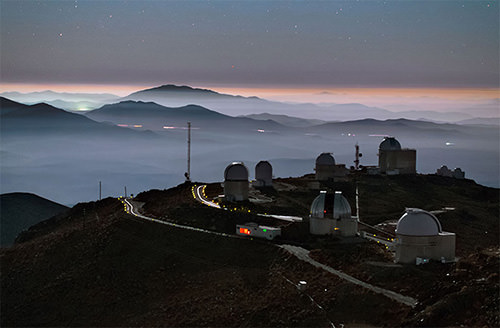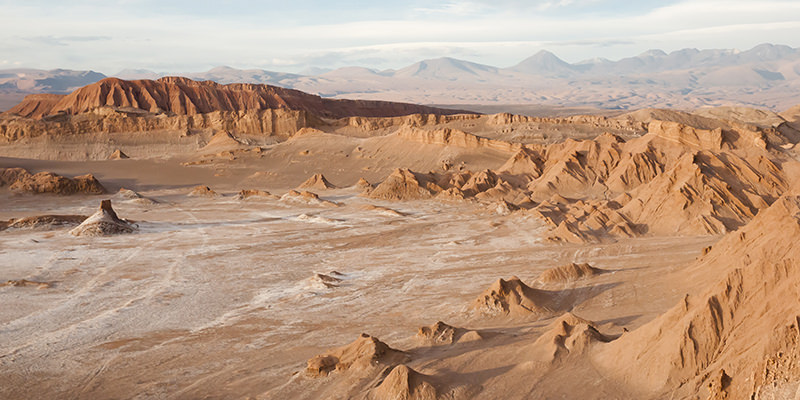There is nothing about this that doesn’t sound Sci-Fi astounding. First, the flat and seemingly lifeless expanse of the Atacama desert, 600 miles of graveyard-quiet emptiness rising from Peru’s southern border into Northern Chile. A place so arid and otherworldly, they could easily film “Star Wars Episode 7: The Unexpected Adventures of Kylo and BB-8.” In fact, the Atacama is aggressively inhospitable: “at its center,” says National Geographic, “a place climatologists call absolute desert, the Atacama is known as the driest place on Earth.” And at that center, life is sparse, always in desperate struggle.
Then there’s “The Darkness,” the Stephen King-sounding name of a dark mist that rolls over the desert every morning, only to evaporate and leave the region exposed to the merciless bake of the noonday sun. The mist itself is actually produced when incredibly strong sun rays hit the nearby Pacific, evaporating a relatively significant amount of water into the air, which the winds then push eastwards, to Atacama. (The name “The Darkness,” originally “Camanchaca,” was given to the mist by the pre-Colombian Aymara residents, who used to collect mist as it condensed on rocks.)
Centuries later, the darkness persists, but we’ve also advanced. Now we have the power of the Fog Harvester, which absolutely sounds like something we’ll use to climatize other planets we’ll colonize in the distant future, or when Trump becomes president. Just as the name sounds, the fog harvester is a large but actually relatively simple device for capturing that morning mist before it evaporates. Imagine a giant window screen, with thinner and more concentrated mesh. Wind is set up to blow the Darkness (we just like saying that) into the screen, where it actually condenses around the mesh and is collected.

As prime as this sounds for your next Sci-Fi screenplay, the best part is that it’s all actually going on. They’re using fog harvesters to collect almost 4 gallons of water per day (per harvester). And what this means for parched climate of Atacama is the ability to irrigate and supply water agriculturally and infrastructurally; the kitchens and bathrooms in fog harvester labs run entirely on harvested water, and surrounding villages rely less and less on tanker trucks delivering water for their survival.
And of course, let’s not forget about the possibilities for brewing beer. While delivering water to villages with no potable supply is clearly priority one, there are actually residents in the Coquimbo region of the desert who also use the water to brew a local beer. And while the condensed mist is already checked and purified for any contaminants (bacteria, dangerous mineral content), we admire anyone going the extra mile to guarantee safety by brewing.
Not that the Atacama has no chance of water supply the old-fashioned way. A rare, significant rainfall in 2015 caused the normally barren desert to explode with blooms–seeds that had lain dormant for years, suddenly brought to life.
A harsh place, but not without its magic. Or beer.

